Current Issues Pt 2
This page continues from the previous page detailing current issues going on in the world today ... how can we help?
The Batwa people are the original people of the rainforests of Uganda – they hunted and gathered in the forests of Southwestern Uganda in what is now Bwindi Impenetrable forests and in the shadows of the volcanoes of what is now Mgahinga Gorilla National Park.
They lived peacefully, kept their traditional ways leaving a small footprint of their presence in the ancient forests. They only hunted and gathered what they needed, there was a deep respect for the forests which were their homes, its wildlife, plants and trees, many saw them as protectors of the forest. There is the saying “A Batwa loves the forest as much as he loves his own body.”
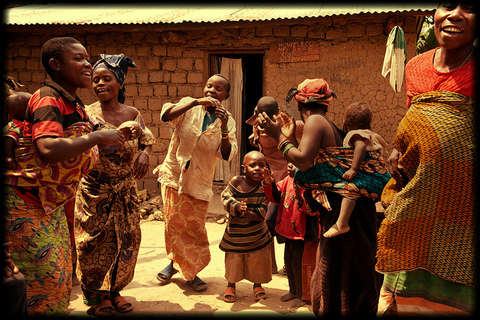
The Mgahinga and Bwindi Forests were an integral part of the Batwa People – the forest was the basis for their identity culturally and practically, in relationship to their religious belief system, their livelihood. The forest is where they lived, it provided them with food, even medicine, shelter, protection and a place of safety from other tribes. The forest was the home of the ancient Batwa Pygmies.
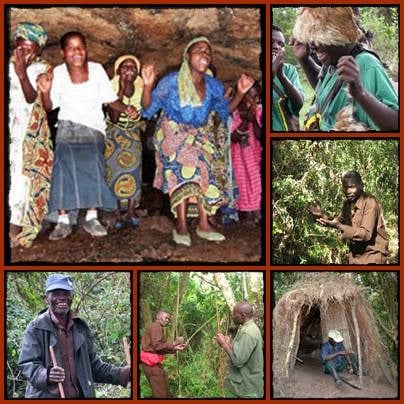
In 1991 it all changed – the government evicted them (most without any compensation) when the Bwindi Impenetrable Forest and Mgahinga Gorilla Parks were established – the Batwa people who had peacefully co-existed with their beloved forest now were a people without a home – without land – without a way of life which had been to hunt and gather- – they were citizens of Uganda on the one hand, while on the other they were a people without rights, without compensations for their losses – now living beyond their ancient homelands as squatters at the mercy of others
The Awa People
The Awá who live without any contact with outsiders are some of the last uncontacted people on the planet.
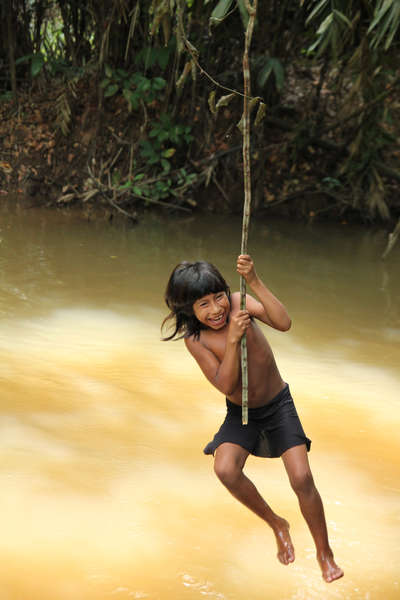
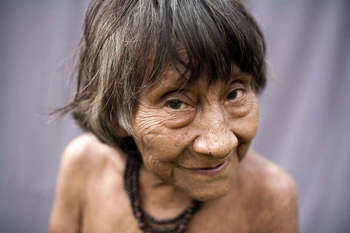
As nomads, they carry the things they need with them as they move: bows and arrows, children, pets. Everything comes from the forest: the baskets made from palm leaves, the loops of vine used to climb trees, and the tree resin burned to provide light.
The work of the loggers and ranchers has reached crisis point: some 30% of one legally-protected Awá reserve has been cut down. The Awá’s forests are disappearing faster than any other indigenous area in Brazil.
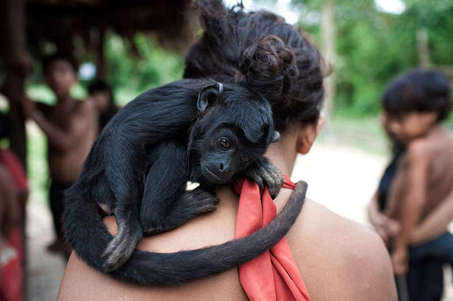
The world’s threatened tribal peoples
The Americas
- Akuntsu Brazil
- Awá Brazil
- Ayoreo Paraguay
- Brazilian Indians Brazil
- Enawene Nawe Brazil
- Enxet Paraguay
- Guarani Brazil
- Indians of Raposa–Serra do Sol Brazil
- Innu Canada
- Nukak Colombia
- Sierra Nevada Indians Colombia
- Uncontacted Indians of Brazil Brazil
- Uncontacted Indians of Peru Peru
- Wichí Argentina
- Yanomami Brazil
- Zo’é Brazil
Africa
- Bushmen Botswana
- Maasai Tanzania
- Ogiek Kenya
- Omo Valley Tribes Ethiopia
- Pygmies Central Africa
Asia & Australasia
- Aboriginal people Australia
- Batak Philippines
- Dongria Kondh India
- Jarawa India
- Jummas Bangladesh
- Khanty Russia
- Palawan Philippines
- Papuan Tribes Indonesia
- Penan Malaysia
- Siberian Tribes Russia
- Wanniyala-Aetto Sri Lanka
General Info
- 150 million tribal people live in more than 60 countries across the world although their land ownership rights are recognized in international law, they are not properly respected anywhere
- Many tribal people who are today ‘uncontacted’ are in fact the survivors (or survivors’ descendants) of past atrocities. These acts – massacres, disease epidemics, terrifying violence – are seared into their collective memory, and contact with the outside world is now to be avoided at all costs.
- Many of the isolated Indians of western Amazonia, for example, are the descendants of the few survivors of the rubber boom which swept through the region at the end of the 19th Century, wiping out 90% of the Indian population in a horrific wave of enslavement and appalling brutality.
- Others are survivors of more recent killings. The Amazonian people known as the ‘Cinta Larga’ [‘wide belts’] suffered many vicious and gruesome attacks at the hands of Brazilian rubber tappers between the 1920s and the 1960s. One famous incident, the 1963 ‘massacre of the 11th parallel’, took place in the headwaters of the Aripuanã river where the firm of Arruda, Junqueira & Co was collecting rubber.
- An uncontacted tribe lives less than 100 km from Machu Picchu, one of the busiest tourist destinations in the world.
- One uncontacted tribe is now believed to be reduced to only one man, known as the Last of his Tribe, who digs holes in the Amazon rain forest to catch animals and fires arrows at anyone who comes near.
- When tribes are destroyed, so are their languages and the knowledge contained within them. One linguist has described the loss of a tribal language as being 'worse than a bomb dropped on the Louvre'.
- More than 70% of the Peruvian Amazon has been carved up into oil concessions, making uncontacted tribes extremely vulnerable to the introduction of diseases.
- It is not unusual for 50% of a tribe to be wiped out within a year of first contact, by diseases such as measles and influenza.
The Yanomami are one of the largest relatively isolated tribes in South America. They live in the rainforests and mountains of northern Brazil and southern Venezuela.
The Yanomami
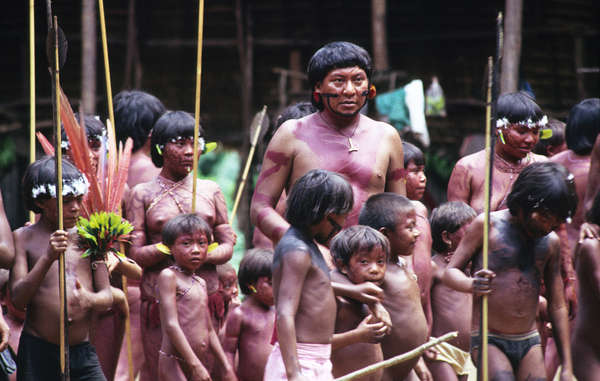
Mining, ranching, and health care chaos threaten Yanomami
For thousands of years, the Yanomami have thrived in the rainforests of South America.
Now, they are struggling as the government fails to protect them from criminal invasions, attacks and disease
Davi Yanomami in a Yanomami community, Brazil
Like most tribes on the continent, they probably migrated across the Bering Straits between Asia and America some 15,000 years ago, making their way slowly down to South America. Today their total population stands at around 32,000.
At over 9.6 million hectares, the Yanomami territory in Brazil is twice the size of Switzerland. In Venezuela, the Yanomami live in the 8.2 million hectare Alto Orinoco – Casiquiare Biosphere Reserve. Together, these areas form the largest forested indigenous territory in the world.
Latest threats
Over 1,000 gold-miners are now working illegally on Yanomami land, transmitting deadly diseases like malaria and polluting the rivers and forest with mercury. Cattle ranchers are invading and deforesting the eastern fringe of their land.
Yanomami health is suffering and critical medical care is not reaching them, especially in Venezuela.
The Brazilian congress is currently debating a bill which, if approved, will permit large-scale mining in indigenous territories. This will be extremely harmful to the Yanomami and other remote tribes in Brazil.
The Yanomami have not been properly consulted about their views and have little access to independent information about the impacts of mining.
Davi Kopenawa, a leading Yanomami spokesman and President of Hutukara Yanomami Association, warns of the dangers.
‘The Yanomami people do not want the national congress to approve the law or the president to sign it. We do not want to accept this law.’
‘Our land has to be respected. Our land is our heritage, a heritage which protects us.’
‘Mining will only destroy nature. It will only destroy the streams and the rivers and kill the fish and kill the environment – and kill us. And bring in diseases which never existed in our land.’
Uncontacted Yanomami
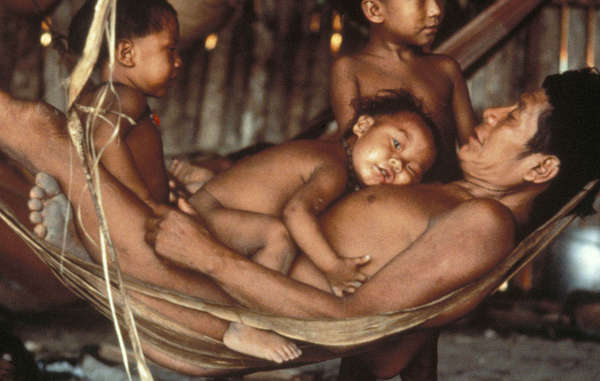
Yanomami have reported seeing uncontacted Yanomami, whom they call Moxateteu, in the Yanomami territory. The Moxateteu are believed to be living in the part of the Yanomami territory with the highest concentration of illegal goldminers.
Contact with the miners could be very dangerous for the Moxateteu, as violent conflict could erupt. The miners also spread malaria and other diseases, which could be fatal for the Moxateteu who will not have built up immunity to common diseases.
Despite repeated requests from the Yanomami, the Brazilian authorities have failed to remove the illegal gold-miners and failed to sort out the health crisis.
The Yanomami’s health is now at risk as malaria and other diseases are spreading.
The Yanomami first came into sustained contact with outsiders in the 1940s when the Brazilian government sent teams to delimit the frontier with Venezuela.
Soon the government’s Indian Protection Service and religious missionary groups established themselves there. This influx of people led to the first epidemics of measles and flu in which many Yanomami died
In the early 1970s the military government decided to build a road through the Amazon along the northern frontier. With no prior warning bulldozers drove through the community of Opiktheri. Two villages were wiped out from diseases to which they had no immunity.
The Yanomami continue to suffer from the devastating and lasting impacts of the road which brought in colonists, diseases and alcohol. Today cattle ranchers and colonists use the road as an access point to invade and deforest the Yanomami area.
The gold rush and genocide
During the 1980s, the Yanomami suffered immensely when up to 40,000 Brazilian gold-miners invaded their land. The miners shot them, destroyed many villages, and exposed them to diseases to which they had no immunity. Twenty percent of the Yanomami died in just seven years.
After a long international campaign led by Davi Kopenawa Yanomami, Survival and the CCPY (Pro Yanomami Commission), Yanomami land in Brazil was finally demarcated as the ‘Yanomami Park’ in 1992 and the miners expelled.
However, after the demarcation gold-miners returned to the area, causing tensions. In 1993, a group of miners entered the village of Haximú and murdered 16 Yanomami including a baby.
After a national and international outcry a Brazilian court found five miners guilty of genocide. Two are serving jail sentences whilst the others escaped.
This is one of the few cases anywhere in the world where a court has convicted people of genocide.
The gold mining invasion of Yanomami land continues. The situation is Venezuela is very serious, and Yanomami have been poisoned and exposed to violent attacks for several years. The authorities have done little to resolve these problems.
Indians in Brazil still do not have proper ownership rights over their land – the government refuses to recognise tribal land ownership, despite having signed the international law (ILO Convention 169) guaranteeing it. Moreover, many figures within the Brazilian establishment would like to see the Yanomami area reduced in size and opened up to mining, ranching and colonisation.
To make things even worse, the Brazilian army has built barracks in the Yanomami heartlands, which has increased tensions. Soldiers have prostituted Yanomami women, some of whom have been infected with sexually transmitted diseases.
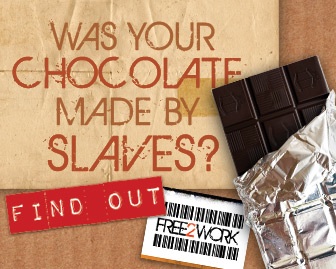
CHOCOLATE SLAVERY FACTS:
The cocoa industry creates billions of dollars a year. The Ivory Coast produces nearly half of all the world's cocoa, West Africa collectively, supplies nearly 70% of the world's cocoa.
In the 21st century, slavery still exists. As a matter of fact, according to the Department of State, the number of slaves is higher than it's ever been with an estimated 600,000-800,000 people trafficked yearly for slavery.
Of the 600,000-800,000 people trafficked, 70% are female, and 50% are children.
There are about 600,000 cocoa farms in the Ivory Coast, with an estimated 15,000 children forced to work as slaves on these farms.
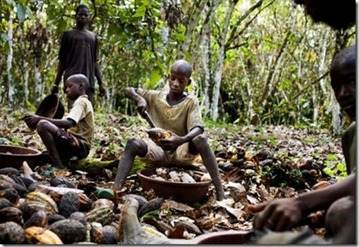
It is estimated that 90% of cocoa farms on the Ivory Coast use child labor.
The Ivory Coast is the top supplier of the world's cocoa, and the center of chocolate slavery.
Slave traders are trafficking boys, between the ages 9-16, from their homes mostly in Mali, but including Burkina Faso, Ghana and Togo. Some countries are transport points, while other receive and supply the children.
The main destination is the cocoa farms in Ivory Coast where the boys are lured by promise of a salary for their hard work. One they arrive, they are forced to work from 6am to 6pm or later without pay.
They must carry backbreaking sacks of cocoa, are often starved, beaten and locked up at night without toilet facilities.
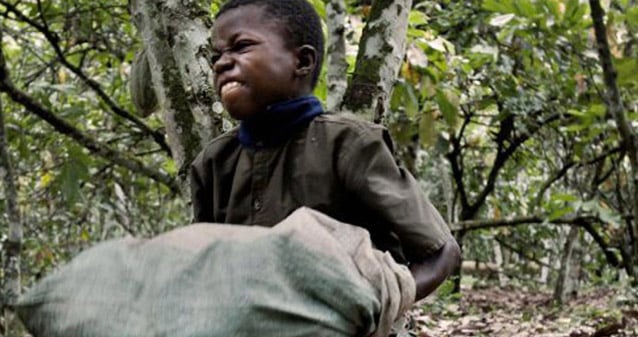
So why does this chocolate slavery still exist when we know about it?
Chocolate slavery is able to exist because of a number of factors. There is a lot of secretiveness on the farms about abuse. The Ivorian farms are usually small and located in remote areas where people do not travel.
Most people involved in the cocoa trade have never seen these remote farms. Even if they did visit, it's difficult to see the abuse because the owners are good at hiding the truth and the children often look like they are part of the family from the outsiders view.
Ivory Coast has been dependent on exports historically, and approximately 1/3 of the Ivorian economy is based on cocoa production. The government has encouraged production by offering various incentives to growers.
Unfortunately, cocoa is considered one of the most unstable commodities in terms of fluctuating prices, so farmers are always looking for cheaper ways to produce it. Poverty levels are extremely high in West Africa, so this is where most slave traffickers prey.
There is a cultural variable involved as well. The farmers and other people use their own children to help cultivate cocoa beans, so some farmers do not see why it is wrong to use the labor of other children. I
In Africa in general, the sight of children working is quite common and not necessarily seen negatively.
So while there are many factors involved in the existence of chocolate slavery, the solutions have been slow in coming.
In the last decade, there has been a great deal of outrage against chocolate slavery, but again, the answer lies with us, the consumers. Sadly, most of the chocolate you see in stores is "slave chocolate."
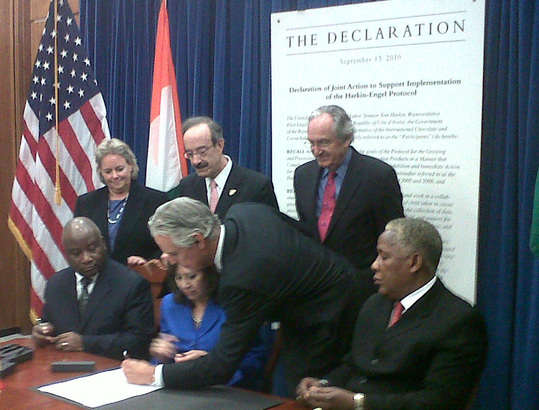
What Is the Harkin-Engel Protocol?
In 2001, Congressman Eliot Engel (D) NY came across an article describing the situation with the worst forms of child labor (including child trafficking) on the cocoa plantations of Ghana and West Africa. Timing was on his side as a large FDA bill what about to hit the Congressional floor and Engel slipped in and addendum that chocolate companies would have to mark their bars “No Slavery Here” if that was the case. The FDA bill passed but before if hit the Senate, the candy lobby intervened and hired George Mitchell and Bob Dole as the henchmen to thwart the bill. Senator Tom Harkin (D) Iowa, a long time advocate for ethical child labor joined forces with Engel. The result was The Harkin-Engel Protocol. Simple the candy companies admitted that there was a problem and that they would voluntarily clean up the supply chain of the worst forms of child labor with remediation to be done by 2005. It’s now 2012 and not a lot has been done. There is still no assurance that cocoa coming into our ports is free child slavery. Here is a link to the Harkin-Engel Protocol
Directory of Ethical Chocolate Co.’s
Generally, if the chocolate is organic, has a fair trade label or the cocoa is listed as being sourced from anywhere other than Ghana or The Ivory Coast then it’s slave free.
- Chuao
- Denman Island Chocolate
- Divine Chocolate Co
- The Endangered Species Chocolate Company
- Equal Exchange
- Green and Black’s
- Health by Chocolate
- iChoc
- L.A. Burdick Chocolates
- La Siembra Cooperative (Camino)
- Max Havelaar
- Mayordomo
- Montezuma’s Chocolates
- Newman’s Own Organics
- Original Hawaiian Chocolate
- Plamil Organic Chocolate
- Rain Republic
- Rapunzel Pure Organics
- Seed & Bean Chocolate
- Shaman Chocolates
- Sweet Earth Chocolates
- Terra Nostra Organic
- Theo Chocolate
- Tony Chocolonely
- Trader Joe’s Organic Chocolate Bars
- Vivani Chocolate
What can we do about all this … ?
We have an obligation to inform ourselves about the origins of the electronic gadgets, sporting goods, chocolate or clothes we buy, and if we are not satisfied that a business or its supply chain isn't involved in forced or child labour, then consider looking elsewhere. Unfortunately, all too often our only concern when comparing products is the price, rather than where the goods came from and how they were made.
If a company is doing something you're not happy with, talk about it. Contact the company, let friends know or take to social media with concerns. Apple was forced to open up some of its factories to scrutiny after suggestions it was using forced labour in poor conditions, showing the power of consumer pressure.
As investors - no matter how small our ''mum and dad'' investment portfolios - we can encourage companies to adopt positive labour policies. And as voters we also have the right to raise issues that concern us with our local members of Parliament. Ask them to ensure Australian companies are acting responsibly at home and abroad.
Although these are important steps, the reality is that children don't work in such conditions because they want to, they do it because poverty forces them to.
For some of the 1.4 billion people around the world living in abject poverty, child labour isn't a choice, it's a necessity. To improve the access these children have to an education, to time for play and to domestic stability, we need to eradicate global poverty - and that task rests with each and every one of us.
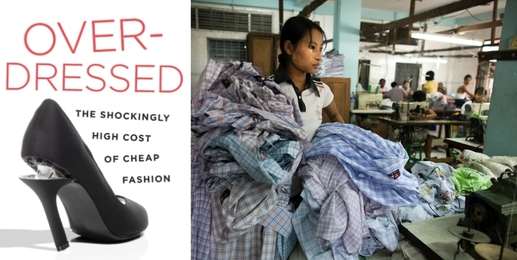
How do you contribute to modern day slavery of human trafficking?
You may contribute to human trafficking in ways you're unaware of, suggests the US State Department in a run-down of how what Americans wear, use and consume in daily life can be affected by "modern day slavery."
Human trafficking – which includes forced labor – ensnares millions of men, women, and children globally. A young Indian bonded child laborer is walked away after being rescued during a raid by workers from Bachpan Bachao Andolan, or Save the Childhood Movement, at a factory in New Delhi, India, June 12.
To highlight the overall problem, the US State Department offers a run-down of some of the intersections of American life and global involuntary servitude. In a typical day, Americans can wear, use, and consume items made or processed by men, women, and children in what the agency calls "modern day slavery." While there is growing public awareness of fair-trade labeling that may help consumers avoid goods affected by trafficking, the State Department sponsors an interactive website – http://slaveryfootprint.org – that allows you to calculate "how many slaves work for you" based on your consumption patterns . The site also offers ways consumers can help reduce human trafficking.
6 A.M. GET READY FOR WORK
The clothes on your back could have been produced by a man, woman, or child in a garment factory in Asia, the Middle East, or Latin America who is subjected to forced labor, including withholding of passports, no pay, long working hours to meet quotas, and physical and sexual abuse. To complete your outfit, the jewelry you put on this morning may include gold mined by trafficked children in Africa, Asia, and Latin America.
8 A.M. AT YOUR DESK:
The electronics you use may be dependent on minerals produced in conflict-affected areas in Africa where children and adults are forced to work in mines under conditions of forced labor and sexual servitude. The electronic devices you use may also be produced in Asia by adults and children – some as young as 9 – who are sold or deceived into working in electronic factories under conditions of forced labor, including excessively long hours, minimal or no pay, and threats.
10 A.M. COFFEE BREAK:
The coffee you drink may have been processed by modern slaves. Some men and children work under conditions of forced labor on coffee plantations in Latin America and Africa. The sugar you put in that coffee may have also come from plantations where children and men in Latin America, Asia, and Africa are sub-jected to conditions of forced labor and debt bondage.
12 P.M. LUNCH:
The fish you eat for lunch may have been caught by men in Southeast Asia and children as young as 4 in West Africa who are subjected to conditions of forced labor in the fishing industry. These victims may have been deprived of wages, food, water, and shelter, worked extremely long hours, and suffered physical and sexual abuse.
2 P.M. AFTERNOON SNACK:
The chocolate dessert you eat may have involved modern slaves, primarily in Africa. Children who work on plantations that produce cocoa – the key ingredient in chocolate – are subjected to conditions of forced labor. An estimated 300,000 children work in cocoa production worldwide.
4 P.M. DRIVE TO A MEETING:
The tires on your car are made of rubber, which is produced in Asia and Africa on rubber plantations. Adults and children – sometimes entire families – are forced to work on these plantations for little to no pay, for excessive hours to meet quotas, and in hazardous working conditions.
6 P.M. ARRIVE HOME:
The bricks in the walls of your house may have been produced by bonded labor victims, including men, women, and children, in brick kilns primarily in Asia and Latin America. Children and adults are forced to work in hazardous working conditions in brick kilns for long hours and minimal pay.
8 P.M. EAT DINNER:
The food you cook and eat for dinner may have been brought to you by men and children subjected to forced labor on cattle ranches and farms in the US, Latin America, and Africa. These victims work long hours, receive little or no pay, and suffer physical and emotional abuse to herd the cattle.
11 P.M. GO TO BED:
The cotton in your bedroom may have been picked by men, women, and children – some as young as 3 – in cotton fields, primarily in Central Asia and Africa. Children are forced to leave school to work under arduous and abusive conditions, sometimes with no pay, during the annual cotton harvest.
Sweatshops and Child Labor
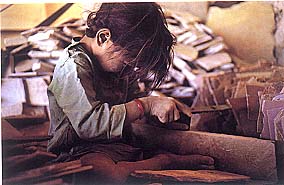
Sweatshops
There is no single definition of what a sweatshop is. The US Department of Labor defines a sweatshop as a factory that violates two or more labor laws, such as those pertaining to wages and benefits, child labor or working hours. In general, a sweatshop can be described as a workplace where workers are subject to extreme exploitation, including the absence of a living wage or benefits, poor working conditions, and arbitrary discipline, such as verbal and physical abuse. Since sweatshop workers are paid less than their daily expenses, they are never able to save any money to improve their lives. They are trapped in an awful cycle of exploitation.
Defenders of sweatshops often bring up the fact that even though sweatshops are bad, they at least give people jobs they wouldn't have had otherwise. However, the type of jobs sweatshop workers receive are so bad that they rarely improve their economic situation.
For more information on what a sweatshop is, I encourage you to read the What to Know about Sweatshops by Green America and Frequently Asked Questions: "Free Trade" and Sweatshops by Global Exchange. These articles give a very good overview of what a sweatshop is and why sweatshops simply aren't acceptable.
Child Labor
The International Labor Organization (ILO) has estimated that 250 million children between the ages of five and fourteen work in developing countries. 61% in Asia, 32% in Africa and 7% in Latin America. Many of these children are forced to work. They are denied an education and a normal childhood. Some are confined and beaten. Some are denied the right to leave the workplace and go home to their families. Some are even abducted and forced to work.
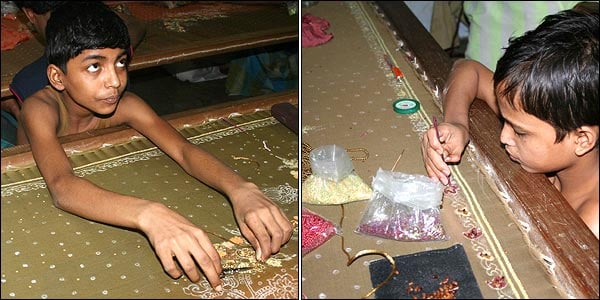
Which products are made in sweatshops?
All kind of products can be made in sweatshops.
Some of the biggest problem industries are:
- Shoes
Many types of shoes are made in sweatshops. However, the biggest problem is found with sneakers and athletic shoes.
Most athletic shoes are made in sweatshops in Asian countries.
Child labor is also very common in the shoe industry. - Clothing
Clothing is very often made in sweatshops and with the use of child labor.
In the U.S. the majority of garment workers are immigrant women that work 60-80 hours a week, usually without minimum wage or overtime pay. Overseas, garment workers routinely make less than a living wage, working under extremely oppressive conditions. - Rugs
A lot of child labor is used in the rug industry. Nearly one million children are illegally employed making hand-knotted rugs worldwide.
Approximately 75% of Pakistan's carpet weavers are girls under 14. - Toys
A lot of toys are made in sweatshops and by child labor. Especially toys made in countries like China, Malaysia, Thailand or Vietnam. The average North American toy maker earns $11 an hour. In China, toy workers earn an average of 30 cents an hour. - Chocolate
43% of cocoa beans come from the Ivory Coast where recent investigators have found child slavery. In addition, cocoa workers who are paid, receive wages that leave them at the edge of poverty and starvation. - Bananas
Banana workers are some of the most exploited workers in the world. They have to work long hours, get low pay, are forced overtime and are exposed to dangerous pesticides. - Coffee
Coffee is the second largest US import after oil.
Many small coffee farmers receive prices for their coffee that are less than the cost of production, forcing them into a cycle of poverty and debt.
| Young men sew beads and sequins in intricate patterns onto saris and shawls at workshops. The boys, who arrive by train from impoverished villages across India, often work from six in the morning until two in the morning the next day. Some sleep on the floor of the workshop. If they make the smallest mistake, they might be beaten. All say they work to send money back to their families, but some employers are known to withhold their meager pay. |
Fashion victims
Garment workers pay a high price to produce cheap clothes for the UK high street. Factories across the world, including in Bangladesh and India, produce clothes for retailers on the UK high street, and garment workers working there struggle to survive on extremely low pay, suffering poor working conditions, arduous hours and a complete lack of trade union representation in the factories.
For too long the UK government has supported purely voluntary initiatives for improving the rights of overseas workers. But there have been few steps taken to improve workers’ rights, pay or working conditions within these mechanisms.
Retailers cannot continue to pay lip service to corporate social responsibility whilst engaging in buying practices that systematically undermine the principles of decent work. War on Want will continue to hold to account those UK companies that exploit workers for their own profit.
Ultimately, however, the UK government must act to regulate the operations of its companies, both in the UK and overseas.
Sweatshops
“Work environments that possess three major characteristics—long hours, low pay, and unsafe or unhealthy working conditions.”
Boyd Childress
Why this is going on-
People want low cost things. To get the low cost, you need to have low cost labor.
Pair of pants- http://www.hartford-hwp.com/archives/47/266.html
| Made in the USA Made in Nicaragua |
| Retail price $17.99 Retail price $17.99 |
| Average U.S. $8.31/hour Wage in shop(highest)- 43 cent/hour |
| Sewing time--15 minutes Sewing time--20 minutes |
| Labor cost--$2.08 Labor cost—14cents |
| ($8.31/hr x 15 min = $2.0775) ($.43/hr x 20 minutes = $0.143332) |
This showed the making of a pair of pants where and how much it cost.
Who uses and where-
Gap-Thailand.
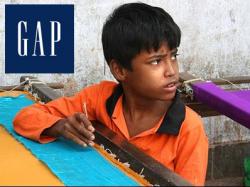
Wal-Mart - there are sweatshops.
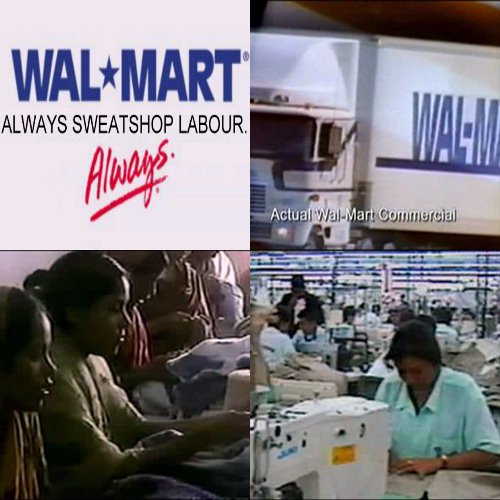
Nike-India.

Tommy Hilfiger- China.
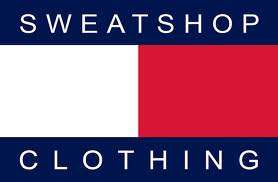
Liz Claiborne- India(jacket selling-$198. Manufactured-$.84cents).
Kathie Lee Gifford-China.
There are many more people that use sweatshops and there are other countries that have sweatshops.
Workers-
85% of sweatshop workers are women between ages 15-25. Because of this, employers often force the women to take birth control (they do routine pregnancy tests) so they do not have to pay for a women to have maternity leave. Women are often fired if they become pregnant.
What do workers want?
Workers need to be paid a living wage, enough to meet their basic needs and to enable them to plan a better future. They need to be educated about their rights, including local labor laws. They also need the opportunity to achieve an education for themselves and their children. And workers need to be able to freely associate and advocate for rights and improvements to their working conditions, pay and benefits without fear of reprisal. Outside of the factories, they should have the right to form cooperatives or worker-owned enterprises in their communities.
Monitoring Problem
Most factories are monitored by inspectors who are paid by the industry. Often, they'll call ahead to arrange a visit. This will give the factory management time to make the place look nice, get rid of the child workers and coach the workers about what to say.
Two independent monitoring organizations are GoodWeave and Verite.
What you can do-
If you want to help, first start small. Look at the tags on your things, and then do a little research on it. Try to get clothes that are “organic”

How can we end sweatshops?
There needs to be full public disclosure. Companies must disclose the treatment and pay of workers and how and where products were made. This disclosure needs to be backed with independent monitoring of working conditions and pay. Violations that are discovered must be corrected in a way that protects workers and their jobs. This includes paying for education for child workers found in factories and paying parents a living wage.
Over all what is getting done-
Even though there are people trying to help, there is only a small dent in getting rid of sweatshops. People speak out against sweatshops but, the sweatshops have been around for so many years that it will take many more before they disappear.
What people are doing to help-
Here is a website that has many other organizations for the sweatshop cause.
http://www.sweatfree.org/organizations
Sweatfree Campaigns
European network of national networks against sweatshops.
Coalition québécoise contre les ateliers de misère
Québec anti-sweatshop coalition based in Montréal.
Empowering consumers and investors to call for an end to sweatshops.
Sweatfree, Fair Trade, and peace campaigns, speakers, global economy education.
Maquila Solidarity Network (Canada)
Canadian anti-sweatshop network
Musicians and fans who are intent on driving sweatshops out of the music business.
Presbyterian Hunger Program, PC (USA)
Educates people about sweatshops and where to purchase “sweatshop free” clothes.
Inter-generational membership organization that supports organizing for sweatfree purchasing policies.
Carpet labeling program and rehabilitation centers for former child laborers in India, Pakistan and Nepal.
Nationwide network for local action against sweatshops.
United Students Against Sweatshops
Network of student activists on over 200 campuses organizing for sweatfree licensing policies.
Teaching resources on sweatshops, child labor, and anti-sweatshop legislation.
Assists in the enforcement of institutional sweatfree codes of conduct.
Here are stories to read for more information-
Secrets, Lies, and Sweatshops
http://www.businessweek.com/magazine/content/06_48/b4011001.htm
THE TRUTH ABOUT SWEATSHOPS: THE GOOD AND BAD NEWS
http://www.humboldt.edu/~gbn2/ainger1.html
© 2014 Majority NOT Minority Ltd - All rights reserved.
No republication of this material, in any form or medium, is permitted without express permission of the author